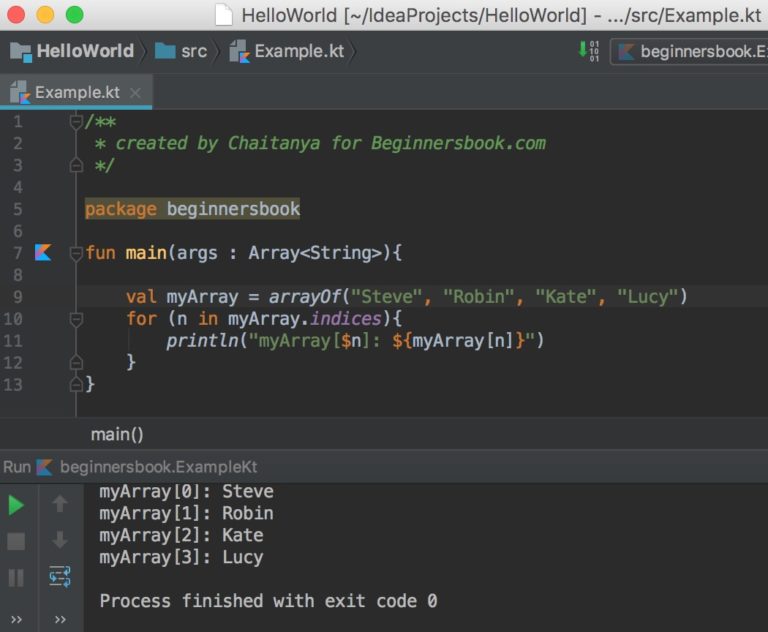
Changes in that view are reflected in the original list. Sort* instead of sorted* in the names of all sorting functions: sort(), sortDescending(), sortBy(), and so on.ĪsReversed() called on a mutable list returns another mutable list which is a reversed view of the original list. The in-place sorting functions have similar names to the functions that apply to read-only lists, but without the ed/d suffix: As such, they're one of the basic building blocks for a lot of Kotlin code. When you apply such an operation to a list instance, it changes the order of elements in that exact instance. If you've written Kotlin code before, you've definitely seen a list they're collections of ordered elements, where each element is accessible via an index. For mutable lists, the standard library offers similar extension functions that perform the same ordering operations in place. val otherStrings arrayOf ('a', 'b', 'c', 'd', 'e') for (i in 3.otherStrings. Java Java Java Kotlin Lisp Lua Obj-C PHP Pascal Pascal Perl Python. In Collection Ordering, we describe operations that retrieve collection elements in specific orders. Instead of iterating over the items in your array, you can iterate over the indices and access the array by index. Print each index i with its value x from an array-like collection items. Val numbers = mutableListOf(1, 2, 3, 4, 3) You can also specify an index range to search in: in this case, the function searches only between two provided indices. action - function that takes the index of an element and. If there is more than one element with the given value, the search can return any of their indices. Performs the given action on each element, providing sequential index with the element. If such an element exists, the function returns its index otherwise, it returns (-insertionPoint - 1) where insertionPoint is the index where this element should be inserted so that the list remains sorted.

To search an element in a sorted list, call the binarySearch() function passing the value as an argument. The for-each construct is also applicable to arrays, where it hides the index. It works significantly faster than other built-in search functions but requires the list to be sorted in ascending order according to a certain ordering: natural or another one provided in the function parameter. The iterator variable occurs three times in each loop: that is two chances. There is one more way to search elements in lists – binary search. You can use until with your for loop to iterate a range of elements from an element up to another element.Println(numbers.indexOfLast )

In this article, we will discuss kotlin loop until with examples.


 0 kommentar(er)
0 kommentar(er)
